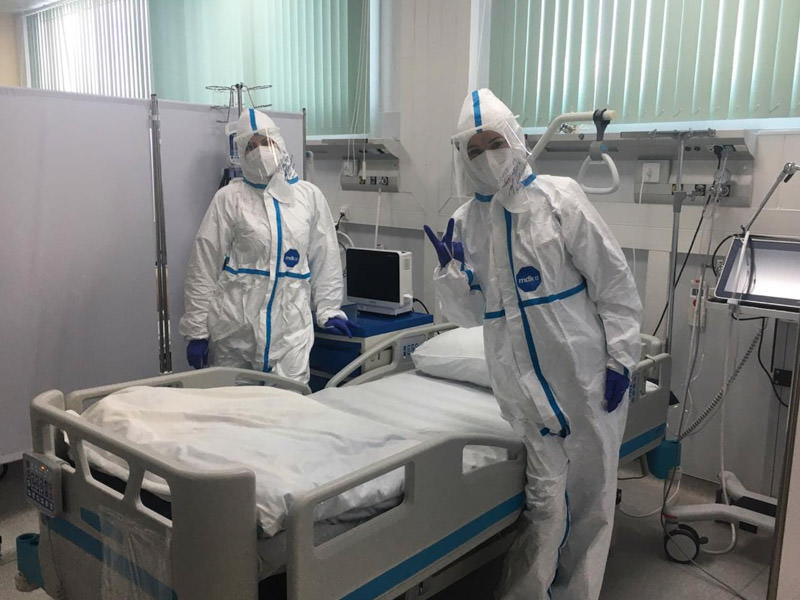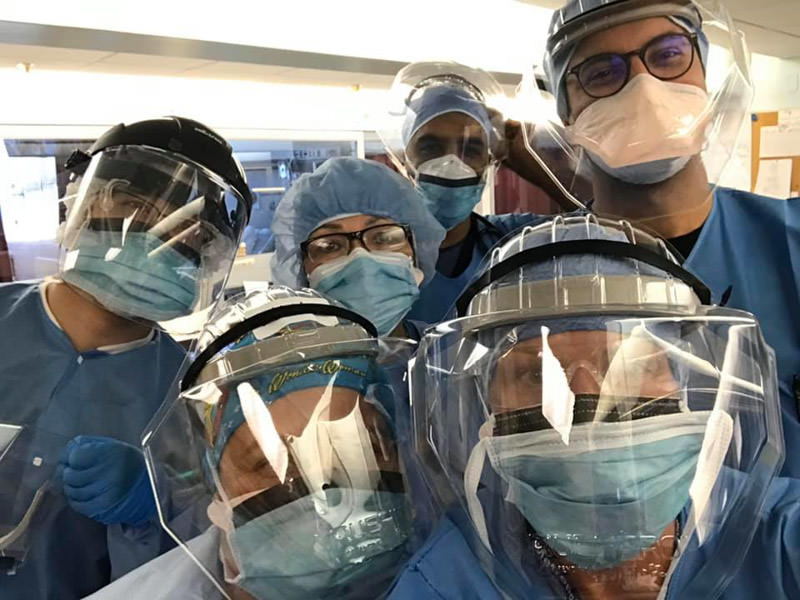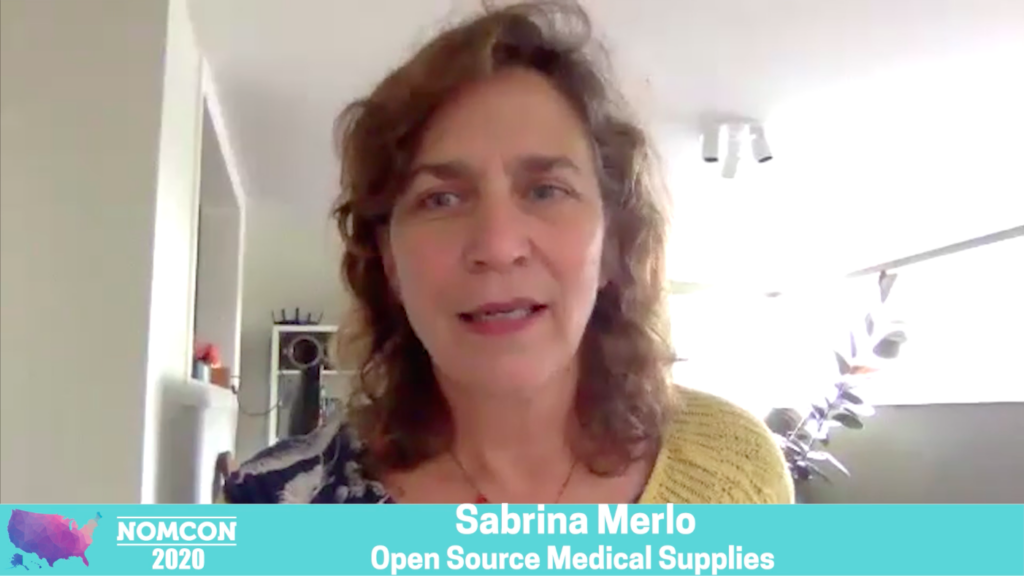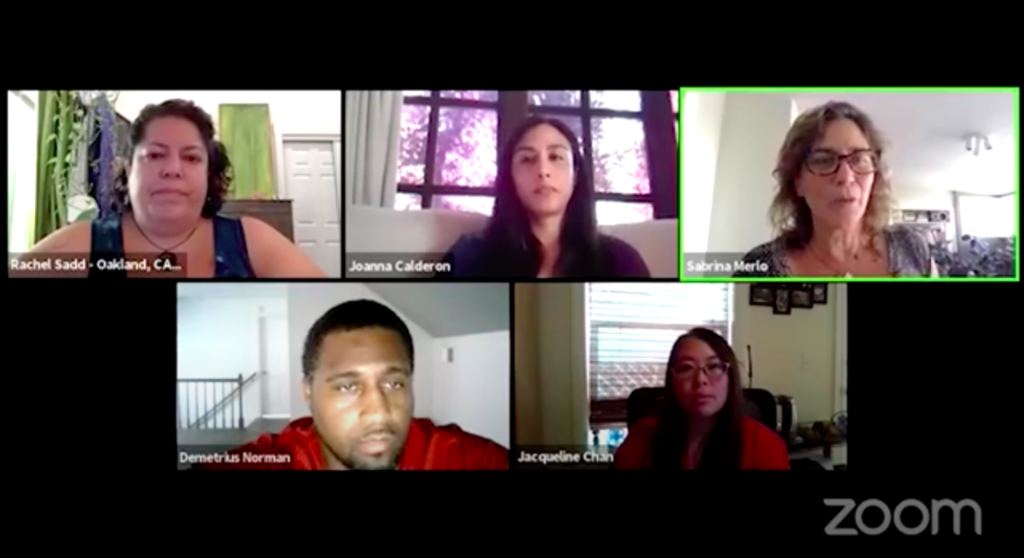Outreach Guidance
Outside of hospitals treating COVID-19 patients, nursing homes, secondary care facilities, homeless shelters, and schools are also facing great need for PPE. These institutions are usually more budget-constrained, but also are generally more open to accepting locally produced supplies.
Locating Demand
This is an especially gratifying time to be a networker. There is a broad understanding of the need for PPE and other medical supplies to fight COVID-19, and most people – and their businesses – are motivated and generous if they have an avenue to participate. In general, it is critical for success to identify the individuals that are empowered to contribute, drive progress, set policies, and extend their network. Do not waste time on avenues that are resistant. Work with active collaborators, even in institutions and businesses.
Considering Equity and Distribution
As a Local Response group, your team has the opportunity to both answer direct calls for help, but also to discover pockets of need.
GetUsPPE, the PPE needs exchange website, analyzed its demand data and discovered that 65% of their requests were coming from counties that had median incomes in the top 25%. Lower income and rural regions were underrepresented and not requesting supplies through this platform. As they shared in our OSMS Community Conversation on this topic, reaching these communities is requiring the GetUsPPE Equity Team to run a direct outreach campaign.
Rachel Sadd (AKA The Crafty Avenger) of Ace Makerspace in Oakland, CA shared valuable insights on reaching underserved communities in our aforementioned webinar, and created a handy PDF for reading and distribution.
To address equity in distribution, your team will need to choose to dedicate time and energy to research what groups in your area have needs that you can help fulfill.
Hospitals
Hospitals, especially those with ERs and ICUs, are likely to have critical needs for PPE and other medical supplies. Your group can offer help to communicate their needs to, and help mobilize, local/regional manufacturing capacity for collection drives and production. However, willingness to accept donations or purchase locally-produced PPE and medical devices is absolutely unique to each institution or network.
There are two relationship paths towards servicing hospitals: Directly, through contact with hospital administrators (“procurement” or “purchasing”) or indirectly through organizations such as local or statewide nurses’ unions, or via individual healthcare employees who work in a facility.

Hospitals may be difficult to work directly for a few reasons. First, all hospital equipment and supplies are regulated to ensure standards of quality. This means that even if their PPE inventory might be low and healthcare providers may not have adequate protection, the institution may be hard-pressed to publicly accept and provide PPE and supplies that have not met regulatory requirements (even production facilities need to be compliant and approved). Read the Safety and Liability section in the OSMS Medical Supply Guide for more information on that.
Another difficulty around hospitals is that some high-demand medical supplies (such as N95 masks) require a level of advanced manufacturing that is not yet possible for local response efforts to meet. The volume of supplies needed can be very high (hundreds of thousands per week) and is often too great to be met by the efforts of individual makers — but can be met, in part, by a very well-organized, distributed production model. As COVID-19 cases rise in your area, hospitals may be overwhelmed and may not have the bandwidth to work with individuals. Especially smaller or less resourced hospitals might also not have the workforce needed to provide points of communication for volunteer groups and will focus their limited energies on communicating with larger suppliers.
Hospital Direct Outreach
- Look first on the hospital website to determine what the hospital needs. Many hospitals are listing what PPE and supplies they are accepting. Note: many are unlikely to list needs for locally-made supplies on their website. Reach out to the hospital administration or procurement office to see if you can help.
- Check to see whether the needs of your local hospitals or other medical services are listed in these (and other) online PPE demand/supply exchanges such as PPEneeded.com, GetUsPPE, or Mask-Match.
- When you call, ask to speak to the Procurement Manager or Supply Manager.
- Make notes in one document (see suggested templates in Resources Links below) with the following types of fields:
- Name, phone number, email address, and preferred method of contact.
- Supplies and quantities needed.
- If they are open to accepting locally-produced PPE.
- If there are specific designs they are interested in.
- Next steps.
- Amount delivered.
- Identify types and quantities of supplies needed. Record this even if they are requesting supplies you cannot furnish. You can provide this information to other resource-sharing networks.
- Ask if they are working with any major donation drive campaigns (note who they are for follow-up collaboration).
- If no PPE donation drives are happening, consider starting one.
- Check in with nurses and medical workers’ unions, as they are known for running donation drives in other cities.

- Ask if they are open to accepting locally-made supplies.
- Elicit any information about available supplies and/or patterns that they would like you to use.
- Share the OSMS Medical Supply Guide and point to designs that other hospitals or medical practitioners in the area are using/that you have in production.
- Offer to deliver a physical prototype or sample for their review. Check back for feedback and help to iterate design as requested/able. This is an important step in building trust with the hospital.
- Document procedures for notifying the facility that supplies are ready to be dropped off and/or drop off or mailing procedures. Your team may need to consolidate distributed production at an intermediary location before coordinating drop off at the facility.
- Tightly limit access to this information as part of information security practices (see Information Security section).
Hospital Indirect Outreach
If you are unable to make headway by reaching out directly to a hospital, there are indirect paths you can take. Labor unions that represent nurses and medical workers may be interested in understanding your group’s capacity to provide for their members. Reach out and build relationships. They may even be able to help with getting designs approved, as well as distribution. Online public forums like Facebook groups or neighborhood forums (like NextDoor) have also been a successful way to find medical workers listing their needs
And don’t forget that your own personal network—and the collective network of your team— may drive indirect donation of new and locally manufactured supplies. Reach out to medical workers you know and ask them if they or their colleagues are in need. In some communities, volunteer courier services—bicycle messengers and motorcycle clubs—are acting as point to point distribution networks.
Civic, Social and Community Essential Workers
While protecting healthcare workers is vital, it’s important to remember that providing PPE to vulnerable community members reduces transmission and slows the rate at which people present to the hospital. Civic, community, and social service entities are generally more willing to accept maker-produced PPE and their needs are usually on a scale that is more manageable for smaller local production. Outreach methods are similar to hospitals above (internet research, social media, cold calling, etc). Make sure to record contact information and needs-data as you work.
Types of organizations and “essential” workers (those that are working in localities with active “shelter in place”-type guidelines) that are in need include:
- Police and Fire departments
- Urgent care facilities
- Ambulance businesses
- Nursing homes & lifetime care facilities
- Sub-acute and long-term rehabilitation facilities
- Public health departments
- Homeless advocacy groups & shelters, social services agencies, and domestic violence organizations
- Retail/grocery workers (these may have labor unions you can work through)
- Distribution warehouse workers, and garbage and recycling workers
- Disability organizations (direct service)
- Funeral homes
- Vulnerable community members (such as people who need “buddies” for wellness checks)
- Prison workers and detainees (jails, prisons, ICE detention, etc.)
- Transit maintenance workers and airport workers
- Local donation drives, collecting commercially manufactured PPE and other supplies to distribute to local organizations in need
Manufacturers

To address large-scale demands of hospitals, large-scale manufacturing capacity is generally required. Small- and medium-scale manufacturers are retooling for PPE and medical supply production, seeking to both to contribute to closing the gap in the supply chain, and also to develop new revenue streams during this economic disruption.
At NOMCON 2020, Sabrina Merlo of Open Source Medical Supplies hosted “New Relationships with Local Manufacturers” where we talked with a number of makers who had completed face shield design and vetting work with hospitals, and then collaborated with local injection molding manufacturers to scale production. Another maker group had sourced a textile manufacturer and helped them stand up a gowns production line—and connected them with hospitals ready to contract for goods.
Some tips for reaching manufacturers:
- Conduct outreach to determine what manufacturing/machining/fabrication resources already exist in your area.
- If you are U.S.-based, connect with your state’s manufacturers.
- NIST Manufacturing Extension Partnership (MEP) Program has at least one in every state that is knowledgeable about the local manufacturing presence. Connect with Your Local MEP Center (or visit the #local-response-connect Slack channel and search for “MEP”).
- Search the Thomas Manufacturers Database of “Covid-19 Response Suppliers.”
- Other ways to locate production facilities:
- Manufacturers’ associations
- City or regional economic development departments
- Local Chamber of Commerce
- Industrial design, prototyping and product development houses
- Large companies with local production facilities
- Universities and colleges (engineering, design, business departments are connected to local industry)
- Trade unions
- Machine shops
